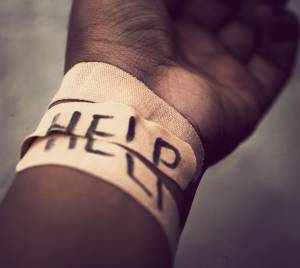In literature, failed romance often leads to suicide – as with “Romeo and Juliet” or “The Sorrows of Young Werther” by Goethe. However, the reality is much darker. Suicide risk factors are numerous, and include poverty, abuse, chronic physical or mental illnesses, family violence, and exposure to other suicides. That’s why the community of the Attawapiskat First Nation is so concerned about the number of suicides that have happened in their small reserve.
11 Members of the Community Tried to Take Their Own Life
In a city as big as Vancouver or Toronto, 11 people isn’t that many. The Attawapiskat Nation has about 2,000 members. In one night, 11 of them attempted suicide. The scarier statistic is that since last September, 100 individuals have attempted suicide. This has prompted the community to declare a state of emergency. The House of Commons has held a debate about what to do, and the Prime Minister’s office has pledged to improve conditions for the community.
Resources have been dispatched to help the police and mental health workers. Before the crisis, there were four healthcare providers who did not really have the training in crisis mental health situations. The health ministry dispatched crisis counselors and health workers to improve the conditions. Unfortunately, it took this crisis for the country to send this help. Even worse, the Attawapiskat First Nation isn’t the only place in crisis. Pimicikamak Cree Nation in Manitoba also has a rash of youth suicides causing it, too, to declare a state of emergency.
What Does This Mean for You?
The Attawapiskat First Nation is 600 miles north of Ontario. You may not be in a position to help this community, and to be honest, it’s going to take a lot of work from many individuals to change the conditions that led to the epidemic. What you can do is watch those people who are close to you and make sure that they have help if they need it. Teenagers, especially, read and hear about those who attempt or commit suicide, and it does ripple through the community.
Learn the warning signs of suicide:
- Clinical depression, loss of interest in life
- Talk of death
- Feeling hopeless or in despair
- Telling someone that it would be better if they weren’t here
- Putting their affairs in order
- Saying goodbye to people
You cannot argue or talk someone out of suicide. What you can do is listen and care. Seek help for the individual. Talk of suicide is an emergency. CASP runs a website, suicideprevention.ca, with resources available to find the right help. It is not a crisis center, but it can direct you to one in your area.
Fortunately, suicide is preventable. When someone is in emotional distress, it creates problems with effective problem-solving. Those who consider suicide the answer can’t see any other way out. The problem is catastrophic that there doesn’t seem to be an answer. That’s not because there isn’t an answer, but because it is hidden. Mental healthcare can help direct someone toward better solutions.
According to CASP, talking about suicide is often the best intervention. It’s advised that you should never promise to keep this conversation secret. You may not be able to solve someone’s problem, but listening and caring are more effective techniques. The individual may need outside healthcare treatment.
The answer to these deaths or attempted deaths is not easy. The First Nations have a long road ahead as they change the risk factors which is leading to the suicide epidemic in their communities. You can be informed and understand how to talk to someone who is considering death at their own hands. Then, you can be more effective when listening to them.



